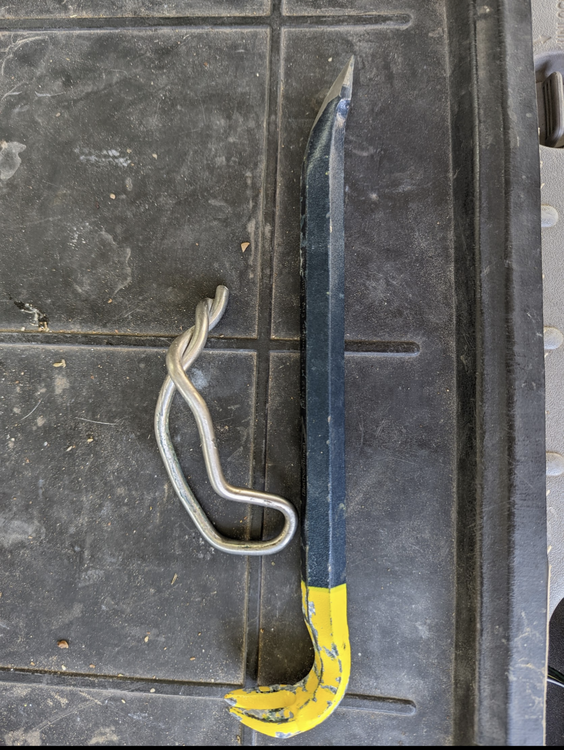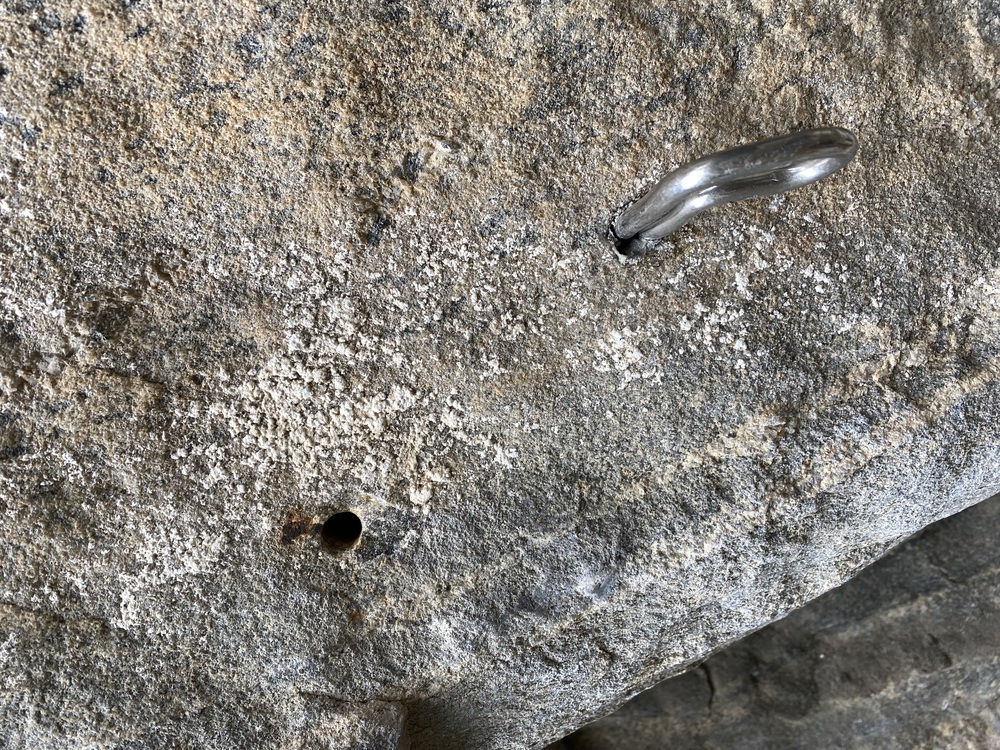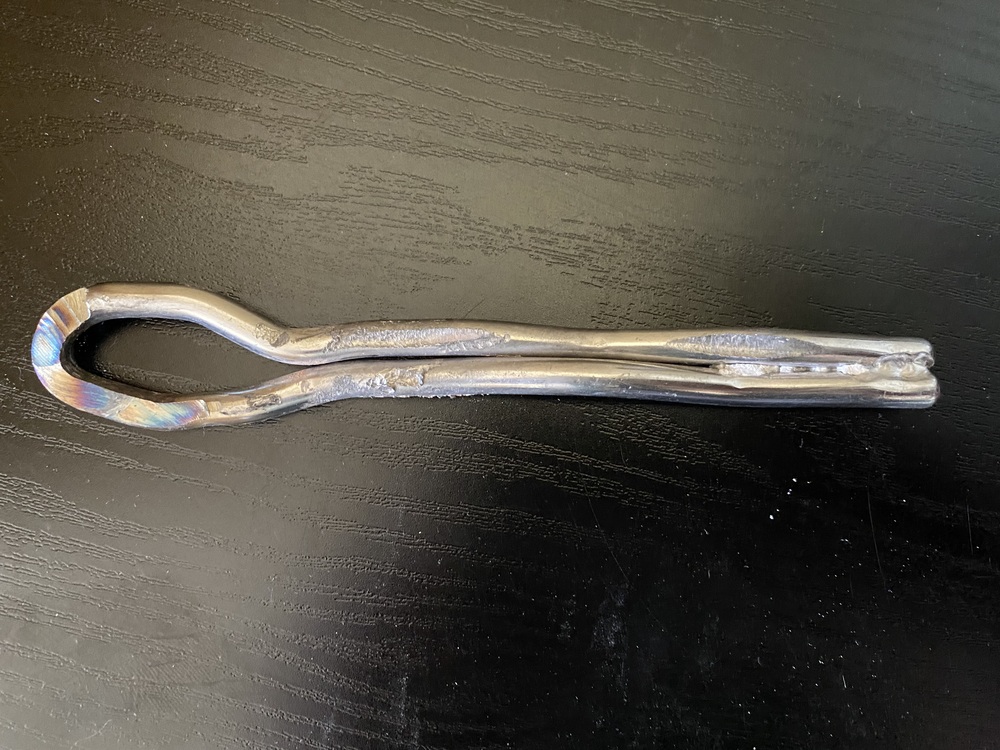Techniques for removing glue in bolts
|
|
Peter Thomas wrote: Thanks for the link Peter. I had missed that video. I will pick up a core drill bit to play with. |
|
|
I’ve had some success removing wave bolts with redneck core drilling and a Hurley sr. This was successfully performed twice in a shop setting and was left with a reusable hole that a new adhesive anchor could be placed in. The process is as follows:
|
|
|
Wes, if last nights experiment works as well on the wall, the Wave bolt might be the most easily replaced bolt out there. |
|
|
However! Having been involved in a lot of experiments and even more discussions with various people over removal ideas for glue -in bolts there usually a logic failure involved. Unless they are simply moved to a better position ( in which case chop and cover is fine) the only reason to remove bolts is they are unsafe. Either the bolt has corrosion/cracks or the resin has failed. In the first case it will be impossible to apply enough force to the bolt to break the resin bond, in general if it withstands brutality then it was good anyway. If the resin has failed then simply pulling it is sufficient. |
|
|
I am wondering why relatively new stainless steel glue in bolts need to be replaced. I thought they were supposed to have a useful life of at least 50 years. |
|
|
climber pat wrote: It's only 50 years under specific conditions. In some chemical environments its a lot less but I think this information was not widely understood even 15 years ago so some got placed in areas where they were not suitable. |
|
|
climber pat wrote: Poor installation. Many were not embedded completely into the rock, up to a 1/3 of the bolt is sticking out. I'm guessing a very worn bit caused this. |
|
|
Andrew Jackson wrote: This happened to me once with a 100mm twist bolt on a hot Texas summer day (108 degrees). I was using A7 for the first time and the glue set so fast, the bolt was only 2 inches in the hole before I couldn't get it further in. I came back with a crow bar and mangled it for 20 minutes until the glue cracked and it pulled out. I could see this happening on an overhanging route as well, if the bolt sags slightly out of the hole while the glue is setting. If you were using a long bolt, it might be sagging out a couple of inches while still being embedded 3 or 4 inches, which would be visually undesirable but also very difficult to rectify. |
|
|
|
|
|
Jim Day wrote: They used Wave Bolts, so they are still imbedded at least a couple inches. This occurred with some frequency, we are just wanting change the visual appeal of those installations. I don't necessarily view those as dangerous per se, the exception to that being a handful that were placed in rock of questionable quality. |
|
|
Andrew Jackson wrote: If it's just a slight amount sticking out, maybe you can load the bolt (e.g. get a couple big guys to bounce on it?) enough to where the eye contacts the wall. This would look less sketchy to a novice climber, and the 6mm steel is plenty flexible that it wouldn't really be damaging the bolt |
|
|
Since this was first posted, I've removed two glue ins, both were wave bolts from a botched attempt to rebolt a route. While probably strong enough, they were removed because they were not fully impeded in the rock, and caused some community concerns. one was partially bent, the other just sticking out. One I did the redneck core drill with a 3/16 Milwaukee 4-cutter bit, drilling a few holes, and then hammering on the bolt to shatter it. It funked out easily after that, and I placed a new 8mm twist bolt. The other I tried to core drill, but ended up drilling through the wave leg and it broke when trying to funk it. I then used a 5/8" Milwaukee 4-cutter bit, and drilled through the remaining 3-4" of leg placing a new 8mm twist bolt. it did destroy the bit drilling through the wave bolt. Above: The empty hole was left from the previous persons attempt to rebolt the route. You can see how far the bolts were sticking out.Below: you can see the sheared wave, pulled wave, destroyed bits, and other junk from the route (the 3/8 sleeve bolt was an original anchor bolt, and the sleeve was upside down on the bolt when I pulled it) While teaching a clinic on glue ins, we pulled one for fun and as an example. we used a 3.16 bit to drill out almost all of the glue, then tried funking it out with a regular hammer, and then a 4 pound sledge Greggerman made to use as a mega funkness. we couldn't pull it. We then used a much longer 3.16 bit to drill out glue deeper were there was probably only 1" of glue left that had been partially drilled. We still couldn't funk it even with the sledge-sledge-funkness. After that we ground down the hanger to fit into a Hurley Sr. and were able to pull it with that. Pretty impressive how strong glue ins are even when severely compromised. I also did a couple tests on my own, and was able to drill out the glue, hammer/shatter what was left, and then funk them out. I did one twist and one wave, and they worked about the same. |
|
|
This discussion made me curious about the chemical resistance of the glues so I downloaded a spec sheet from Dewalt. Apropos of nothing in particular AC100 is listed as being resistant to beer but not resistant to 100 proof ethanol. Not like one should be drinking either when placing glue-ins but an interesting tidbit nonetheless. |
|
|
The method Wes Calkins described above allowed us to pull 3 wave bolts at Pilot Mountain, NC with little effort. Each took about 5-7minutes. Just for kicks, we tried to pull one without drilling or twisting the bolt. It was so difficult that we gave up so as to not damage the Hurley Senior. |
|
|
Giving up before destroying the Hurley Sr was a good idea. I once stripped the threads on the main bolt of a Hurley Sr just trying to pull a 5/16” buttonhead, much less a bomber glue-in.
|
|
|
From an email thread with legend Mike Law:
The Claw: They are hard to pull. eye bolts are pretty simple to twist out. For a Ubolt, use a 4 mm SDS bit to drill down the glue line most of the way around. Then big bar leverage. You can re-use the resulting 16 mm holes, but they use a lot of glue. It is often neater to angle grind them off flush, patch the shiny steel spots with glue and rock dust.You will need a bolt under the lever at some point, or even use a thicker beam above the bolt attached by a biner if the eye is small. Also with a block at the end |

 Continue with onX Maps
Continue with onX Maps Sign in with Facebook
Sign in with Facebook





























